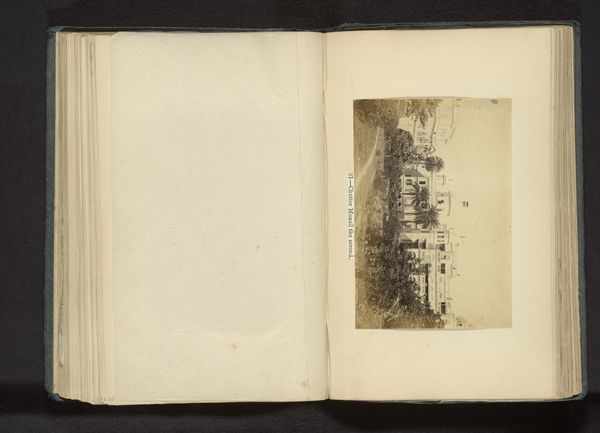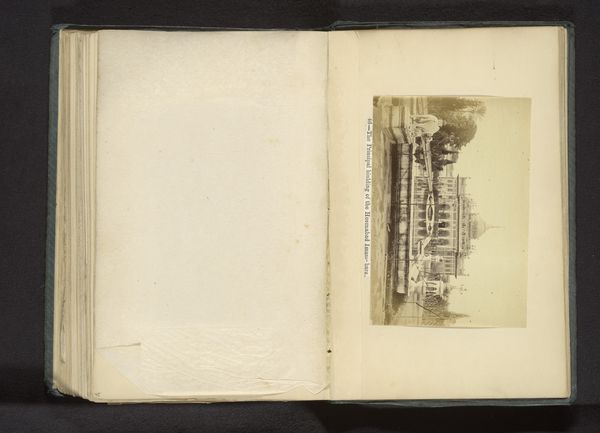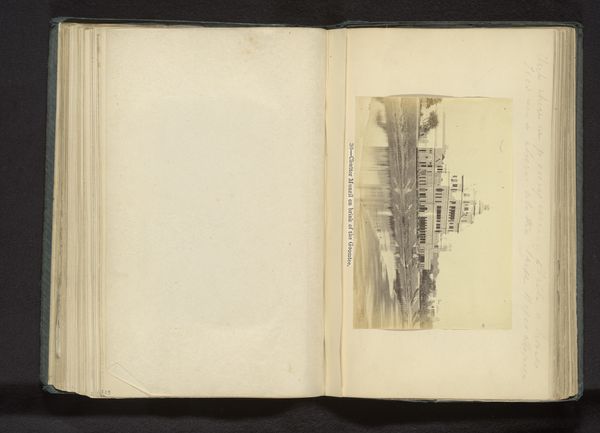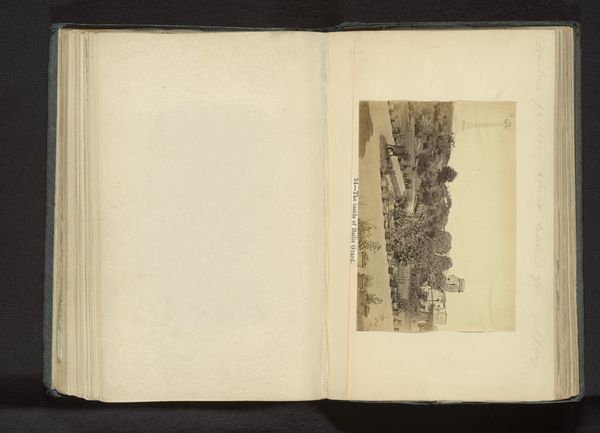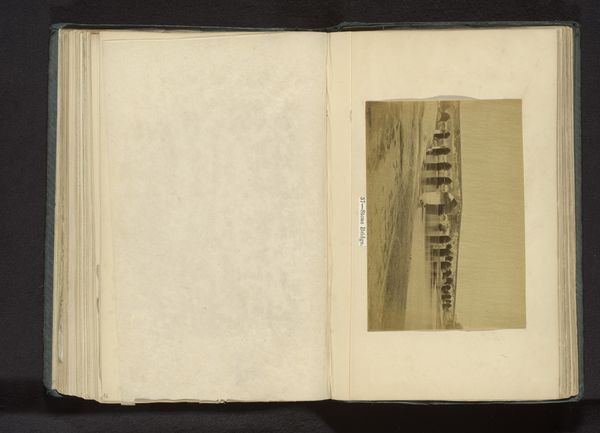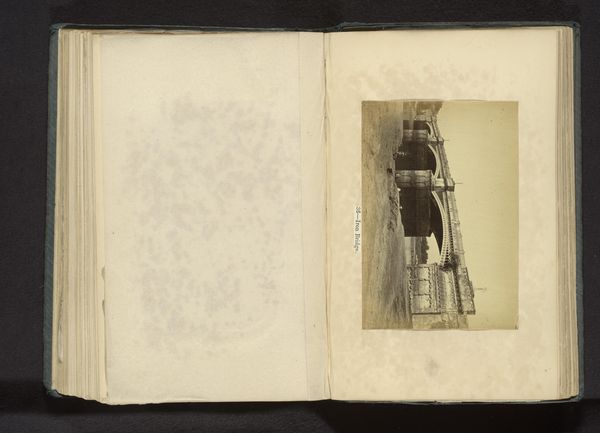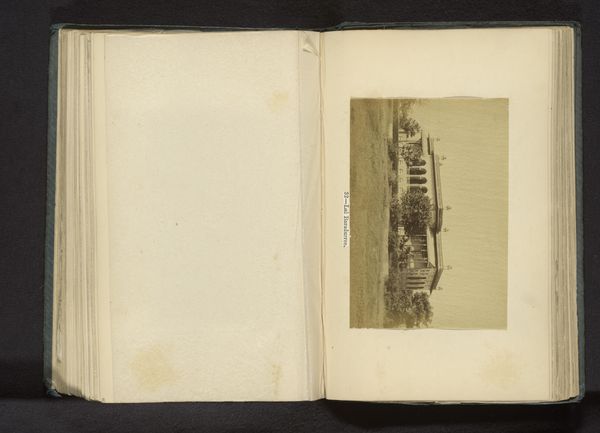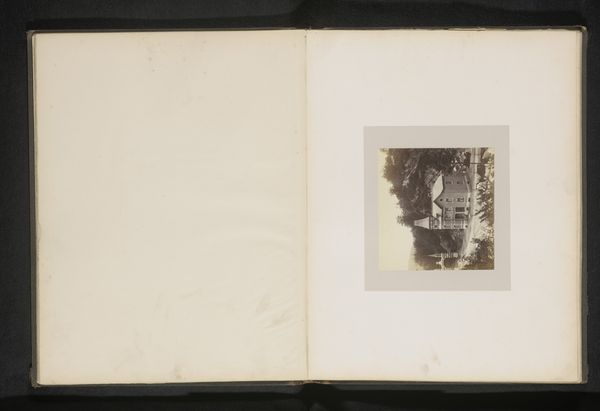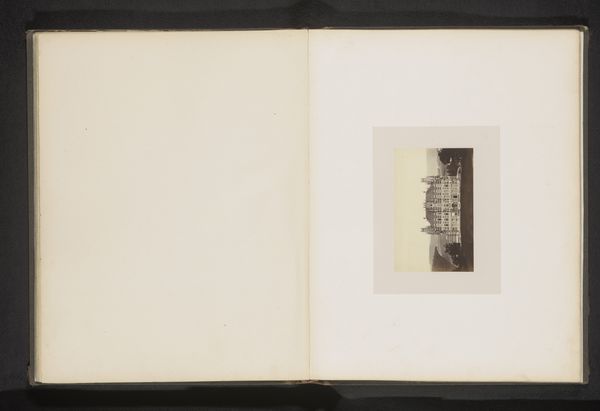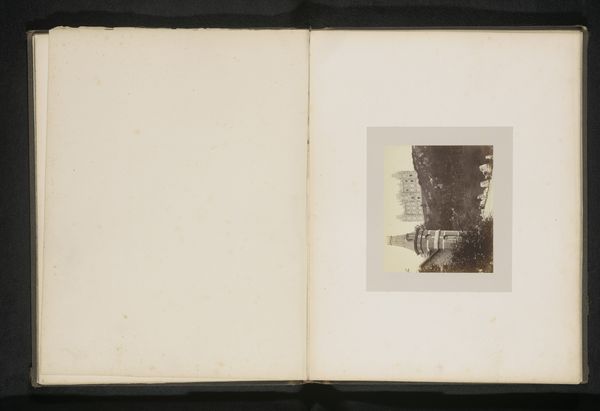
print, photography, albumen-print
#
aged paper
#
homemade paper
#
paper non-digital material
#
paperlike
# print
#
asian-art
#
sketch book
#
landscape
#
paper texture
#
photography
#
personal sketchbook
#
cityscape
#
paper medium
#
sketchbook art
#
design on paper
#
albumen-print
Dimensions: height 105 mm, width 153 mm
Copyright: Rijks Museum: Open Domain
Editor: Right, next up we have an albumen print photograph, specifically "Gezicht op een brug in Lucknow," taken before 1874 by Darogha Ubbas Alli. It's presented in what looks like a personal sketchbook, pasted onto aged paper. There's a ghostly quality to the image. What strikes you when you look at it? Curator: A ghost, you say? Yes! Time does that, doesn’t it? Fades things, softens the sharp edges. For me, it whispers stories of a Lucknow long past. Alli wasn't just capturing a bridge, darling; he was capturing a moment in time. Look at the light, almost shimmering, wouldn’t you say? And consider, he chose this precise view, this specific moment. What do you suppose drew him to it? Editor: Well, the bridge itself is quite prominent, maybe that was his main interest? The architecture? Curator: Maybe! But photography, especially back then, wasn’t just point and shoot, was it? It’s deliberate, each print an offering. So think about context – 19th century India under British rule. Here’s Alli, an Indian photographer documenting *his* landscape, likely for a British audience. Isn't that deliciously complex? He's selling the exotic, sure, but on his own terms. What a trickster! Editor: That’s a great point. The act of documenting itself is a statement. So it's not *just* a bridge. Curator: Precisely! It’s about power, representation, and a darn beautiful image at that. Though, I will admit, it’s quite unusual for him to include his own name in the picture! He had to write it sideways to get it into the frame, like a subtle act of defiance, maybe? Editor: Definitely gives a lot to consider! It seemed simple at first, but there is so much happening. Curator: Art, dear one, is never *just* simple, is it? Even in its quietest forms, there's always a whole world tucked inside.
Comments
No comments
Be the first to comment and join the conversation on the ultimate creative platform.
